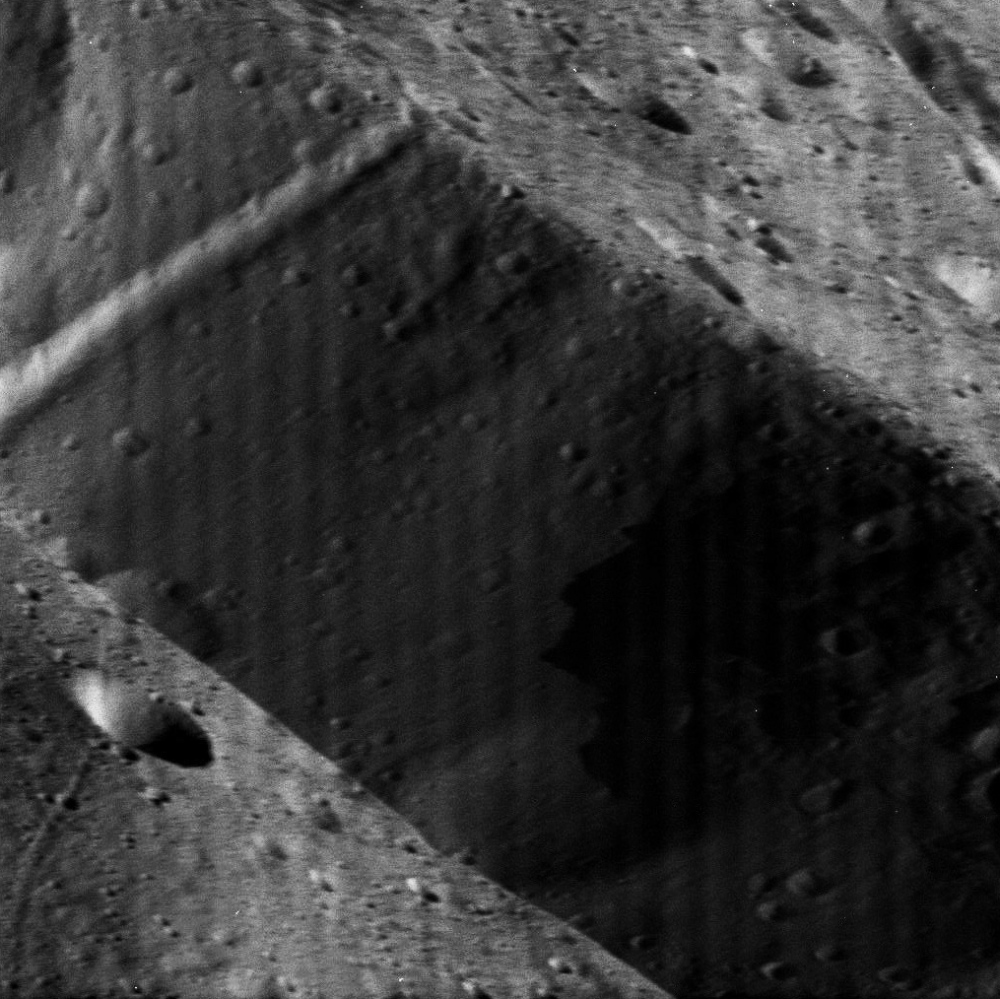
Here’s a close-up look at the extensively-cratered surface of Rhea, Saturn’s second-largest moon, captured by Cassini as it performed its closest flyby yet on the morning of January 11, 2010. Passing a mere 43 miles (69 km) over the surface, Cassini got a great look at some of the deep craters that literally cover the moon from pole to pole.
Images obtained by Cassini’s imaging science subsystem show an old, inert surface saturated with craters, just like the oldest parts of Earth’s moon. But there appear to be some straight faults that were formed early in Rhea’s history, which never developed the full-blown activity seen on another of Saturn’s moons, Enceladus.
During the flyby Cassini used its dust analyzer and plasma and radio wave instruments to study the rate of dust ejected from meteorite impacts on Rhea, with the goal of giving scientists more insight to the composition and age of Saturn’s rings.
About 950 miles (1525 km) wide, Rhea is less than a third the size of Titan, Saturn’s largest moon. Rhea is very reflective, indicating that it is made up of a lot of water ice which behaves like solid rock at the low temperatures there – from -280º to -360º F.
Raw images from the flyby started coming in around 8pm EST and were available on the Cassini mission home page. The one above I rotated 90º from the original, adjusted levels slightly, sharpened via high pass filter and cleaned up some pixel noise via Photoshop. Several other nice ones came in as well as I was writing this so I’ll post them below.
This next one took me a moment to figure it out…but once I turned it 180º I could see it was the rim of a crater or deep fault and Cassini was looking across it! The bottom left is the foreground rim, with a small crater of its own, then the sharp line of the edge and the far wall of the crater can be seen rising up toward the opposite rim at upper right. A long trough cuts into the far wall down into the floor of the crater. Very cool!
….actually, that’s a close-up of the rim of the large crater in the central portion of the image at the top of this post! (Enough prepositional phrases there for ya?) You can tell by the trough and the foreground crater…I just realized this a few minutes after publishing it. Cassini must have snapped these shots just as it made its closest approach to Rhea. Very very cool!
I hope to dig up even more from this great flyby soon…stay tuned!
Images: NASA / JPL / Space Science Institute. Edited by J. Major.


